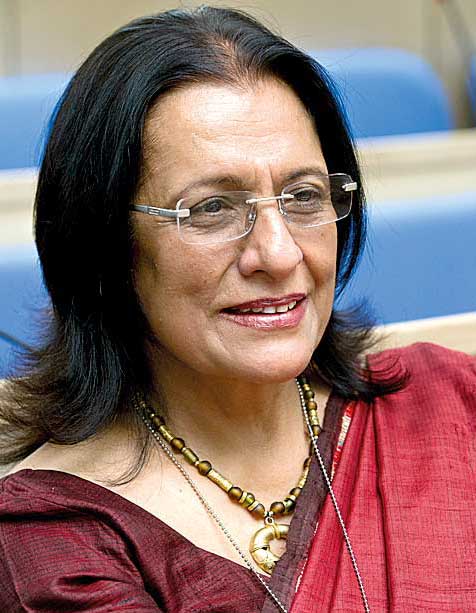Wednesday Apr 24, 2024
Wednesday Apr 24, 2024
Monday, 30 January 2017 00:01 - - {{hitsCtrl.values.hits}}
By Dr. Poonam
Khetrapal Singh
There are many diseases medicine is yet to cure. Diabetes is one. Polio is another. Even for asthma, a respiratory disease common in both developed and developing countries, management is the only course possible.
When it comes to treating leprosy, one of humanity’s oldest and most notorious maladies, however, we are in a strong position.
If detected early, the nerve-attacking disease can be completely cured through multidrug therapy (MDT), a treatment that has healed more than 16 million people since it was first introduced. Owing to MDT’s remarkable breakthrough, leprosy’s transmission has long been avoidable; so too the crippling disabilities it can cause.
There is no reason that leprosy transmission and associated disabilities should persist. In 2015 almost 212,000 leprosy cases were reported worldwide, of which 8.9% were found in children. 6.7% of the total number of cases already exhibited grade two disabilities such as visual impairment, muscle atrophy or clawing.
Though the 22 countries that account for 96% of reported cases have large leprosy-free areas, the affliction continues to circulate among vulnerable communities. In the South-East Asia Region, six countries still report more than 1,000 new cases annually.
Social stigma and discrimination is a major cause. Leprosy’s association with poor social status remains a powerful disincentive to seek testing and treatment, leading to the disease’s spread among family and social contacts.
Fear of the disease’s social and economic consequences is likewise inhibiting early detection among children, causing disability and life-long complications. To make matters worse, several leprosy-affected countries still have legislation in place that allows discrimination against those suffering the disease.

Inadequate access to health care services is also a key deterrent. It is no coincidence that communities in hard-to-reach areas are the most affected, and that the disease’s burden is often highly concentrated.
Migrant populations, displaced communities and the very poor are particularly vulnerable due to their exclusion from health services generally, and gaps in targeted campaigns more specifically.
Ongoing neglect will ensure that endemic areas remain so, and that affected communities continue to bear the disease’s unnecessary burden. To reverse the situation, and to accelerate towards a world in which there is zero disease transmission and zero leprosy-related disability, especially among children, full implementation of the Global Leprosy Strategy 2016-2020 is essential. As the strategy outlines, one of the most effective ways to hasten progress is by adopting one basic though powerful principle: inclusiveness.
First, health authorities should reach out to and include leprosy-affected persons and communities in all aspects of their programming. Not only will this make policy more responsive, it will also advance the interests and visibility of leprosy-affected persons in the public domain. As part of this, persons suffering the disease should be empowered to carry out advocacy activities, as well as to participate in early case identification and treatment adherence campaigns.
Second, the reach of health systems and targeted programmes should be expanded. Leprosy care should be integrated in primary health care services with referral to specialist services where needed. Targeted campaigns should meanwhile be tailored to the needs of groups vulnerable to the problem, while taboos on active case-finding should be quashed.
Third, laws that sanction or abet discrimination against persons suffering leprosy should be repealed. Regressive legislation that discriminates against persons with leprosy continues to exist in several countries in the Region, inhibiting a range of basic rights, from travelling on public transport to those related to marriage or inheritance. Whether from a medical or rights-based perspective, there can be no excuse for this ongoing injustice.
Finally, resources should be mobilised to counter harmful social attitudes. Nongovernmental and civil society organisations should be included in society-wide campaigns to challenge leprosy-related stigma, and to ensure, as per UN resolutions, that discrimination against affected persons and their family members is eliminated. As previous social initiatives demonstrate, change can come remarkably quick, providing a powerful – and immediate – fillip to public health efforts.
Should countries be successful in driving inclusiveness within leprosy programmes, the wider gains will be significant. Greater health coverage will boost progress in tackling other neglected tropical diseases such as trachoma and lymphatic filariasis. More engagement in policy design and implementation will enhance ownership of public health endeavours, including for key infectious diseases such as tuberculosis and hepatitis.
And society-wide efforts to root-out stigma and discrimination will enhance social capital and make for a fairer, more just society in which public health issues can be tackled effectively.
This final point is fundamental. As in so many areas of public policy, where science has found solutions our social, political and economic structures have created barriers. These barriers must be dismantled. In our ongoing efforts to achieve zero leprosy transmission and zero leprosy-related disabilities, inclusiveness is the remedy most urgently needed.
(The writer is Regional Director for WHO South-East Asia.)